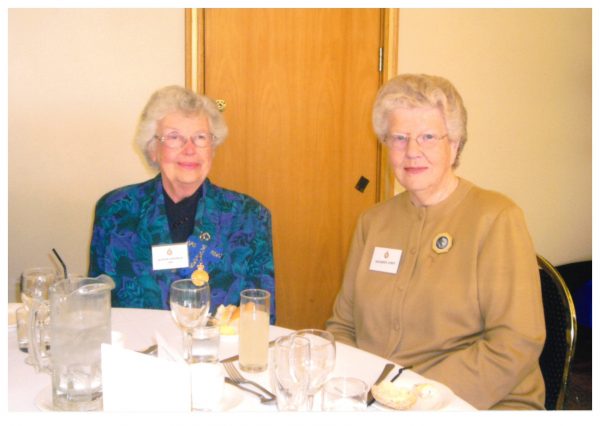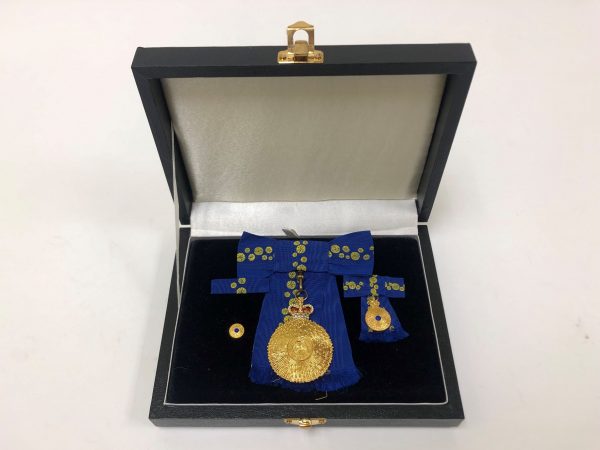Alison Joan Kinsman was born in Adelaide on the 5th April 1928. She attended Highgate Primary School, and later the Methodist Ladies’ College.
She gained a Diploma in Physiotherapy through the University of Adelaide where she was one of an annual intake of 15 students and came under the influence of Miss Elma Casely, Head of School, and her high standards of treatment and care.
Her initial work experience in 1950 was at the Adelaide Children’s Hospital before succumbing to polio. On recovering and returning to work, Alison became the first physiotherapist allocated full-time to the Spastic Centre, which was then located in Kermode Street, meeting Bronwen Jones there and starting a lifelong friendship.

In the mid-1950s she and Bronwen, now a registered nurse, went to work at the Royal Hobart Hospital as a test of their companionability, prior to embarking on travel to and work in Britain. Her first job in London was at the Royal Homeopathic Hospital. Her next appointment was at the University College Hospital where she is said to have “flourished”. Not surprisingly, she always supported her staff to spread their wings overseas too.
Upon her return to Australia in 1959, she commenced work at the Royal Adelaide Hospital where she remained until her retirement in 1986.
During her early years at the RAH, she was responsible, as the sole physiotherapist, for establishing the physiotherapy service to the new Paraplegic Units, both at the RAH and at the Morris Hospital. She became the Supervising Physiotherapist of the Northfield and Morris wards in 1963, thus beginning a decades-long association with what is now Hampstead Rehabilitation Centre. This was followed, 18 months later, by her appointment as Assistant Chief Physiotherapist and then, early in 1966, Chief Physiotherapist (later re-named Director, Physiotherapy), a position she held for 20 years.
During those 20 years, her commitment to her profession is evident through the activities she undertook throughout her professional life and beyond.

Alison was a long-time member and chair for three years of the South Australian Hospitals Department Physiotherapy Advisory Committee advising the Director-General of Medical Services on matters relating to physiotherapy services. These included recommendations on how to provide much needed physiotherapy services in areas of shortage, such as rurally and in mental health; forward planning on the physiotherapy workforce leading to increased student intakes in the mid-1970s; advocacy for occupational therapy and speech pathology which, at the time had no under-graduate training in South Australia; and planning of physiotherapy departments in new hospitals, including Modbury and Flinders Medical Centre.
In addition, she was a member of the Julia Farr Centre Board of Management and an elected member of the Physiotherapists’ Board of South Australia. During her period on the Board much preliminary work was done towards the re-drafting of the Physiotherapists Act. Post-retirement she was a member of the Hampstead Rehabilitation Centre Management Committee bringing her rehabilitation and management experience to this body.
Alison made an active contribution spanning many decades to the Australian Physiotherapy Association. She served as SA Branch Committee member, honorary secretary, president-elect and president. In the latter two roles she established a regional group for the support and development of physiotherapists working in the mid-north of the State; conceptualised and established a special group for physiotherapists working in management roles; and increased the liaison of the Branch with the South Australian Health Commission.
As an invited member, then honorary secretary and, ultimately, chair of the Physiotherapy Society of South Australia, a precursor to the establishment of the Australian College of Physiotherapists, Alison was in at the beginning of the effort to develop the academic foundation for physiotherapy research in Australia, contributing several papers to the Society’s scientific meetings.
In addition, she served on the Continuing Education Committee, was a federal delegate to the national House of Delegates, helped organise two national congresses and was a member and trustee of the Elma Casely Fund. Not slowing down in retirement, she remained a trustee of this fund for many years and was also a facilitator and active member of the Retired Physiotherapists Group.
In 1998, Alison’s contribution to the APA was recognised by the awarding to her of Life Membership.
The education of physiotherapists was recognised by Alison as key to the future development of the profession. In addition to the very close and supportive relationship she developed with successive Heads of School, Alison was a long-time member and chair of the School of Physiotherapy Advisory Committee at the then South Australian Institute of Technology (now University of South Australia). She was also a member of the committee instrumental in pioneering a Spinal Manipulation course under the co-sponsorship of the APA and the School. This course was the forerunner of the world-renowned post-graduate award in Advanced Manipulative Physiotherapy. Alison was responsible for the organisation and supply of clinical space and other resources at the RAH, without which these courses could not have been offered.
She always made space for teaching, ensured the exposure of physiotherapy students to broad clinical practice, influenced the powers that be for the secure functioning of the School of Physiotherapy, and employed new graduates in significant numbers.
Following her retirement Alison continued to make a ‘hands on’ contribution to various community organisations by providing leadership as founding committee member, chair and then volunteer of the Motor Neurone Society; founding chair and member of the Neurological Resource Centre; and patron of volunteers, Hampstead Rehabilitation Centre. Raising community awareness; educating patients, carers and health professionals; raising funds for equipment and research; and assisting with the practical needs of carers were central to Alison’s visions for these organisations and she had the organisational skills to deliver on these visions.
In 2001, Alison was most deservedly awarded Membership in the Order of Australia.

Alison died on the 30th April 2023 aged 95.
Adapted from the original eulogy given by Naomi Haensel at Alison Kinsman’s Memorial Service, and reproduced here with authors permission.